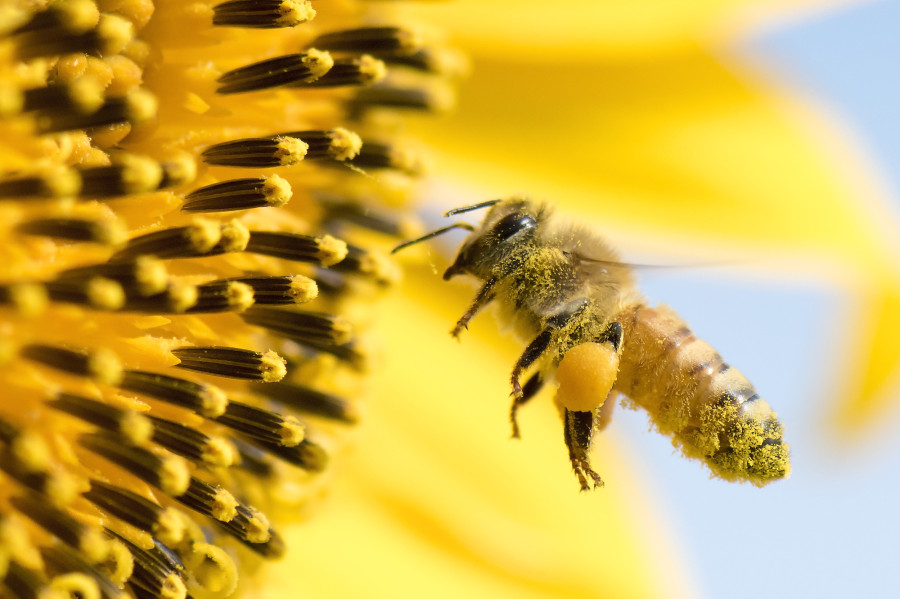Columns
Insects are nature’s little helpers
By combining local knowledge and practices with science, we can improve pest management and aid conservation efforts.
Prayan Pokharel
Many people view insects (Kira) as creepy-crawly creatures that are unimportant until they cause harm such as with a bite, an itch or other unpleasant effects. In the context of Nepal, we hear more about insects during summer when diseases like dengue, malaria, and lyme are on the rise or when there are pesticide residues in vegetables.
There are many indigenous Nepali communities that consume insects and even perform rituals about them. Smita Magar (@teentare), originally from Rukum, tweeted that she grew up eating a few insects: aringal (along with its eggs), phatyangra (grasshoppers), among others. Some districts in Provinces 5,6 and 7 also eat hornet larvae.
Insects and their associated products have been a part of Nepali traditional medicine. Honey, for example, is generally used to treat wounds and to cure urinary ailments because of its unique chemical composition. Some members of Tamang community perform a special bee venom therapy where bees are allowed to sting heart patients to cure cardiac diseases. In the Tharu community, to cure a headache, a species of water bug is packed in a piece of cloth and swallowed alive. Children also play several games with ladybugs and dragonflies. Tharus are known to worship rice bugs (notorious pests of paddy fields) and pray for them not to come to their fields.
However, although awareness and perception of insects are present in various forms in Nepali society, many people still view insects in general as harmful, and many misconceptions prevail. Sometimes this is clear from folk beliefs, which give us terrifying stories of insects, like that a centipede (kansutlo) can enter through your ear and penetrate your brain, or that a praying mantis (akha forwa/namaste kira) can scoop out your eyes.
Nepal’s varied climate and geography means that more than 5000 known species of insects can be found here. Insects are the most successful organisms in terms of diversity and adaptability and are critically important because of their biological roles, and impact on agriculture, human health, and natural resources. They are often regarded as useless creatures at best, and dangerous pests at worst. However, there are many beneficial insects such as pollinators, nutrient cyclers and some are biological predators. Insect predators within an integrated pest management programme can be used to target agricultural pests. For example, tiger beetles (baaghe khapate kira), larvae of ladybugs and lacewings (jaalidaar kira), and assassin bugs (sikari patero) have all been used for this purpose. If we can teach local farmers about these insects, then the use of pesticides can be minimised. This would be an ideal way to grow crops organically, without the negative effects on the health of farmers and consumers.
In the future, there will likely be a scarcity of farmland, water and food. Edible insects could be a part of a solution. Since insects are already eaten in many communities, we can promote insects in the realm of food and feed. Insects are packed with high quality protein and vitamins and they have a high food conversion rate. For example, crickets (gaine kira) need six times and four times fewer inputs than cattle and sheep respectively to produce the same amount of protein. We need to conduct more rigorous research in the biology and ecology of insects so that we can learn to live with them and use them for our benefit in the coming years.
Insect decline, together with climate change, is a hot topic all over the world—the effects of which have already begun to show in Nepal. This year, yarsagumba collectors did not find as much as of the fungus caterpillar in Manang. A new agricultural pest known as the fall armyworm has been reported for the first time in Nepal. Mahendra Singh Limbu (known as the butterfly man), in personal communication, lamented the decreasing number of butterflies in Phulchoki forest and is worried since it is a suitable habitat not only for butterflies but also for birds.
By combining local knowledge and practices with science, we can improve pest management and aid conservation efforts. Nepal has a wealth of insect biodiversity and hopefully, in the future, we can use this to help our society adapt to this changing world.
***
What do you think?
Dear reader, we’d like to hear from you. We regularly publish letters to the editor on contemporary issues or direct responses to something the Post has recently published. Please send your letters to [email protected] with "Letter to the Editor" in the subject line. Please include your name, location, and a contact address so one of our editors can reach out to you.




 7.12°C Kathmandu
7.12°C Kathmandu













%20(1).jpg&w=300&height=200)

